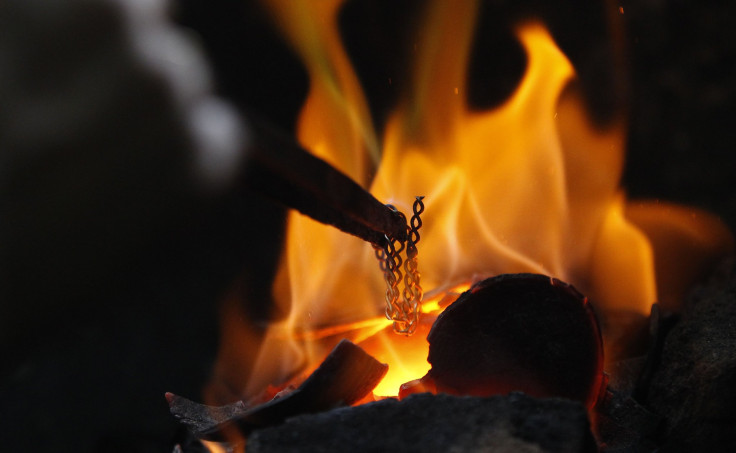Cocaine Worth A Lot, But Gold Worth Five Times More To Colombia’s Armed Groups FARC, ELN And Others: Report

Snort derisively all you want, but, whether consisting of criminals or rebels, armed groups in Colombia are booking higher earnings nowadays through their illegal gold mining than through their illegal cocaine production. In fact, the profits associated with the former activity are five times higher than those associated with the latter, Col. Hector Paez, the acting director of the country’s rural police division, told Bloomberg News.
These armed groups include the Revolutionary Armed Forces of Colombia, or FARC; the National Liberation Army, or ELN; and organized-crime outfits with ties to the nation’s decommissioned paramilitaries.
An illegal gold-mining operation in the Colombian jungle can produce two kilograms of gold per week, while an illegal cocaine-production operation could take six months to bear fruit and requires specialized knowledge, Paez told Bloomberg in an interview in Bogota Wednesday.
Comex gold for August delivery at the New York Mercantile Exchange settled at $1,292 per ounce at the end of the pit session Friday, meaning a kilo (35.2 ounces) of the precious metal is valued at about $45,478. By comparison, a kilo of cocaine is worth about 5 million pesos ($2,570) in the Colombian jungle, Paez said. Thus, a unit of gold is about 17.7 times more valuable than a unit of cocaine.
“Illegal mining has risen in this country -- for gold, coltan, limestone and construction materials,” Paez told Bloomberg. “They are earning more money from gold than cocaine or kidnappings.”
Gold is now Colombia’s third-biggest export, trailing only oil and coal, in that order. The country exported about 70 metric tons of gold last year, according to Bloomberg, which cited data compiled by the Colombian Mining Chamber.
Colombia’s armed groups make their money in the precious metal by operating their own illegal mines and by taxing others’ gold production and machinery use, Paez said.
The country has both the longest and the most productive history of gold exploitation in South America, dating to the pre-Colombian period, according to the Swiss Colombian Chamber of Commerce. The nation was the largest gold producer on the continent until 1937. Globally, Colombia was the 22nd-largest gold producer last year, with 1.2 percent of world production, the chamber said.
“It is a fact that much gold mining has long been undertaken by unregulated miners, so the capacity for expansion is enormous and the majority of mining investment is flowing into gold exploration,” the Swiss Colombian Chamber of Commerce said in a report on the mining sector last December. “That level of investment, combined with the known reserves, should increase production significantly and make Colombia a globally significant producer once again.”
What proportion of this production is and will be benefiting Colombia’s armed groups -- and other unregulated miners -- is anybody’s guess, but it appears likely to be significant. In an interview with Bloomberg last month, Cesar Diaz, the president of the Colombian Mining Chamber, said: “The two big gold producers in Colombia, Mineros SA (MINEROS:Bogota) and Gran Colombia Gold Corp. (TSE:GCM), make up about 10 to 15 percent of total production. So what is there in the other 85 percent? You can draw your conclusion.”
© Copyright IBTimes 2024. All rights reserved.












